Nothing is more mouthwatering than a big steaming bowl of this homemade tonkotsu ramen recipe. While this recipe is one you must dedicate a significant amount of time to preparing, it is worth every second of time. The rich development of flavor in making your own broth coupled with tender bits of pork and perfectly cooked noodles make this the ultimate of comfort food meals.
Homemade Tonkotsu Ramen Recipe
Homemade ramen is the epitome of comfort foods. You may be thinking of the dry noodles with little flavor packets, but those are a poor substitution for the perfection in a bowl of classic tonkotsu ramen. There is nothing that compares with sitting down to a hot bowl of real authentic ramen. The kind that has been cooked and prepared with love and tended for hours to create perfection in every last bite.
While this recipe isn't exactly like what you would find in an Asian home, it is as close as I have been able to duplicate. Once you sit down to a bowl of this and see how the time spent creates such a rich flavor, you'll know that ramen will never be the same for you and your family again. Homemade will always be better than the packets in the grocery store.
What Flavor is Tonkotsu?
Tonktosu is the Japanese word for pork flavor. When talking of tonkotsu ramen, it is typically made with both pork broth but also with pork belly. For this recipe, I created a homemade pork broth and used slices of pork belly for additional flavor and protein in the finished product.
What are the Best Noodles for Homemade Ramen?
Typically rice noodles are the most common used in ramen. You can buy ramen noodles in any grocery store, but find a larger variety of options and package sizes at your local Asian market.
In a pinch, you can use any thin noodle-like angel hair pasta if needed. While I have a homemade egg noodle recipe that is delicious, it wouldn't typically be used for ramen. If you wanted to try it to make a fully homemade experience, you could easily give it a try.
Do I Have to Use Homemade Broth?
Making homemade ramen does not mean you have to use homemade broth. To create a true tonkotsu ramen, you will need pork broth which is not readily available in stores.
You can find it on occasion in specialty grocery stores as well as Asian markets. Making a homemade broth is time consuming, but the results are much better you will probably find yourself making larger batches and freezing them so you always have delicious broth on hand for your homemade ramen.
What Toppings Go in Ramen?
Ramen and pho are very similar in nature. They both have a rich broth, protein, vegetables, and noodles. While different, both do typically have some type of toppings available to add more flavor to the bowl. For ramen, the toppings begin with the meat and vegetables, but also include herbs and sauces. Below are a few common choices for a bowl of tonkotsu.
- Seasoned bamboo shoots
- Fried onions
- Seaweed
- Poached or soft boiled eggs
- Black garlic oil
- Pickled ginger
- Sprouts
- Roasted garlic butter
- Miso butter
- Garlic chips
- Fried onion pieces
- Jalapeno slices
- Green chili pieces
- Sweet corn
Ingredients
The best place to locate some of the ingredients is to look for your local Asian food market. If still not available, feel free to substitute as closely as possible to reach the desired flavors and textures.
For Broth:
- Pork bones
- Onion
- Water
For Ramen:
- Homemade pork broth
- Ramen noodles
- Eggs
- Shitake mushrooms
- Bamboo shoots
- Sweet corn
- Green onions
For Chashu Pork Belly:
- Pork belly
- Soy sauce
- Sake
- Mirin
- Granulated sugar
- Brown sugar
- Garlic
- Onions
- Sesame oil
For Miso Tare:
- Shiro miso
- Sake
- Mirin
- Kosher salt
How do You Make Tonkotsu Ramen Broth from Scratch?
In a large stockpot, cover pork bones with cold water.
Heat over medium heat until boiling then remove and strain the water off the bones then rinse the bones in cold water.
Place the bones back into the stockpot and cover with cold water again, and bring to a boil over medium heat.
Once boiling, add the onion, cover, and continue boiling for 8-12 hours. Maintain the boil over medium heat throughout this process by adding more water as needed. Check on this at least hourly to make sure it has not become too dry.
Once the stock is done cooking, remove the bones and discard them. You can strain any food bits from the stock.
Allow the stock to cool and then refrigerate for up to 3 days or freeze for up to 4 months.
How to Prepare the Pork Belly
In a large Ziploc bag, combine the soy sauce, sake, mirin, granulated sugar, brown sugar, garlic, sesame oil, and green onions.
Place the pork belly into the bag and seal removing as much air as possible.
Place the bag into a large pot of water and sous vide the pork for 10 hours at 170°F.
Once done cooking, remove the pork from the bag and discard the bag and marinade.
Allow the pork to cool completely before slicing into 8-12 slices.
You can put the extra pork into the freezer for another meal or save for a meal the next day.
How to make Tonkotsu Ramen
Prepare hard-boiled eggs as you normally would but set into an ice bath until just before serving.
In a small saucepan, simmer the miso, sake, mirin, and salt for 5 minutes then remove from heat and set aside.
Boil your chosen noodles according to package directions (typically 4-5 minutes) and then drain and set aside.
While the noodles are cooking, rehydrate your mushrooms in boiling water until just softened then remove from the water and set aside.
In a large skillet, fry the sliced pork until golden brown on all sides.
In four bowls, divide the miso tare you made equally among the bowls.
Ladle ½ cup broth into each bowl then stir to combine with the miso tare.
Add noodles to each bowl, then cover with another 1 to 1 ½ cups broth and top with egg, mushrooms, sliced pork, and diced green onions.
More Delicious Recipes
Make sure you check out and bookmark our other delicious authentic from-scratch recipes!
- 30-Minute Thai Chicken Coconut Curry Recipe
- Vietnamese Steak and Noodle Salad
- Easy Crispy Mongolian Beef
- Prawn Nasi Goreng Spicy Indonesian Fried Rice
- Delicious Kerala Egg Curry Recipe
Chef's Tip
The process of making homemade pork broth then a sous vide pork belly is very time consuming, but the result is worth the time. For the pork broth you will need at least one extra day to slow cook the broth. Another option for making broth in a shorter time is to use an Instant Pot or pressure cooker to cook the broth faster but with the same great flavor.
For cooking the pork belly, the sous vide process is the best method. To do this, a large stock pot and a sous vide precision cooker is a must. They are a pricey investment, but are worth it if you plan to make this regularly.
📖 Recipe
Homemade Tonkotsu Ramen Recipe
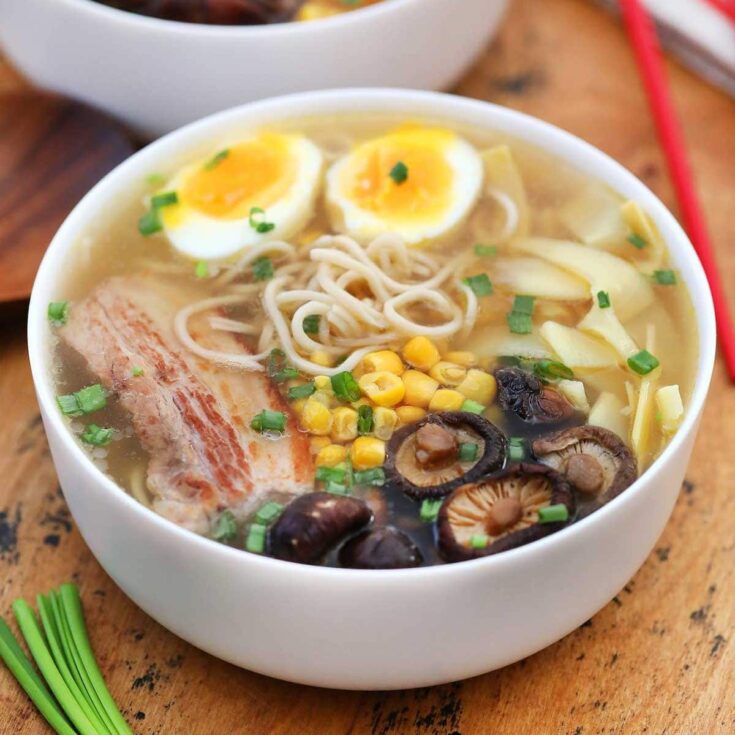
Learn how to make authentic homemade tonkotsu ramen using the slow cooked pork broth and braised pork belly for incredible flavor!
Ingredients
Pork Broth Ingredients
- 6 lbs pork bones
- 1 onion, peeled and halved
Pork Belly Ingredients
- 2 lb pork belly
- ¼ cup soy sauce
- ½ cup sake
- ½ cup mirin
- 2 tablespoon granulated sugar
- 2 tablespoon brown sugar
- 4 cloves garlic, minced
- 2 green onions, chopped
- 1 tablespoon sesame oil
Miso Tare Ingredients
- ½ cup shiro miso
- ¼ cup sake
- ¼ cup mirin
- 1 teaspoon kosher salt
Tonkotsu Ramen
- 8 cups homemade pork broth
- 12 oz dried ramen noodles
- 4 large eggs
- 2 oz dried shiitake mushrooms
- ½ cup bamboo shoots
- ½ cup sweet corn
- 1 green onion, sliced
Instructions
How do You Make Tonkotsu Ramen Broth from Scratch?
- In a large stockpot, cover pork bones with cold water;
- Over medium heat, bring the pot to a boil, then remove and strain the water off the bones and rinse them in cold water;
- Put the bones back into the stockpot and cover with water bringing it to a boil;
- Reduce the heat to medium, add an onion, and cover;
- Keep the pork bones cooking over medium heat and adding water as needed to keep them covered for 10-12 hours;
- After 10-12 hours, remove the bones, strain the broth, and allow it to cool;
- Refrigerate for up to 3 days or freeze for up to 4 months;
How to Prepare the Pork Belly
- In a large Ziploc bag, combine the soy sauce, sake, mirin, granulated sugar, brown sugar, garlic, sesame oil, and green onions;
- Put the pork belly into the bag of marinade and seal removing all of the air;
- Place the bag into a large pot or container of water with a sous vide attachment and cook for 10 hours at 170°F;
- Remove from the sous vide and discard the bag and marinade;
- Once cooled completely, slice into 8-12 slices;
- You will use 4 slices for the servings of ramen, but you can freeze the additional pork belly for up to 4 months;
How to make Tonkotsu Ramen
- Hard boil 4 eggs and set aside to peel and slice just before serving;
- Simmer the miso, sake, mirin, and salt for 5 minutes in a small saucepan then set aside;
- Cook your noodles according to package directions;
- While the noodles are cooking, rehydrate your mushrooms in boiling water until just softened then remove from the water and set aside;
- Fry the sliced pork in a large skillet until brown on all sides;
- Divide the miso tare into four bowls;
- Top the miso with ½ cup broth and mix together with the miso tare;
- Top with noodles, additional 1 ½ cups broth, an egg, mushrooms, a slice of pork, corn, and green onions;
- Serve with your favorite ramen toppings.
Notes
Serve with your favorite ramen or pho toppings like hot sauce, additional chili pepper slices, jalapeno, seaweed, or similar.
Recommended Products
As an Amazon Associate and member of other affiliate programs, I earn from qualifying purchases.
-
 Kadoya Sesame Oil, 22.10 Fluid Ounce
Kadoya Sesame Oil, 22.10 Fluid Ounce -
 Aji-Mirin, Japanese sweet cooking rice wine - 10 oz x 2 bottles
Aji-Mirin, Japanese sweet cooking rice wine - 10 oz x 2 bottles -
 Hime Japanese Dried Ramen Ramyun Noodles 25.4 oz (720g) (Pack of 2)
Hime Japanese Dried Ramen Ramyun Noodles 25.4 oz (720g) (Pack of 2) -
 Instant Pot Duo Evo Plus 9-in-1 Electric Pressure Cooker
Instant Pot Duo Evo Plus 9-in-1 Electric Pressure Cooker -
 Anova Culinary AN500-US00 Sous Vide Precision Cooker
Anova Culinary AN500-US00 Sous Vide Precision Cooker -
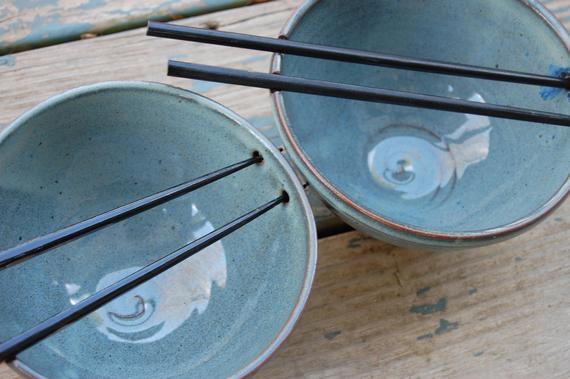 Noodle Bowl or Ramen Bowl in Slate Blue Made to Order | Etsy
Noodle Bowl or Ramen Bowl in Slate Blue Made to Order | Etsy
Nutrition Information:
Yield:
4Serving Size:
1 bowlAmount Per Serving: Calories: 1262Total Fat: 71gSaturated Fat: 25gTrans Fat: 1gUnsaturated Fat: 48gCholesterol: 252mgSodium: 2803mgCarbohydrates: 108gFiber: 4gSugar: 28gProtein: 33g











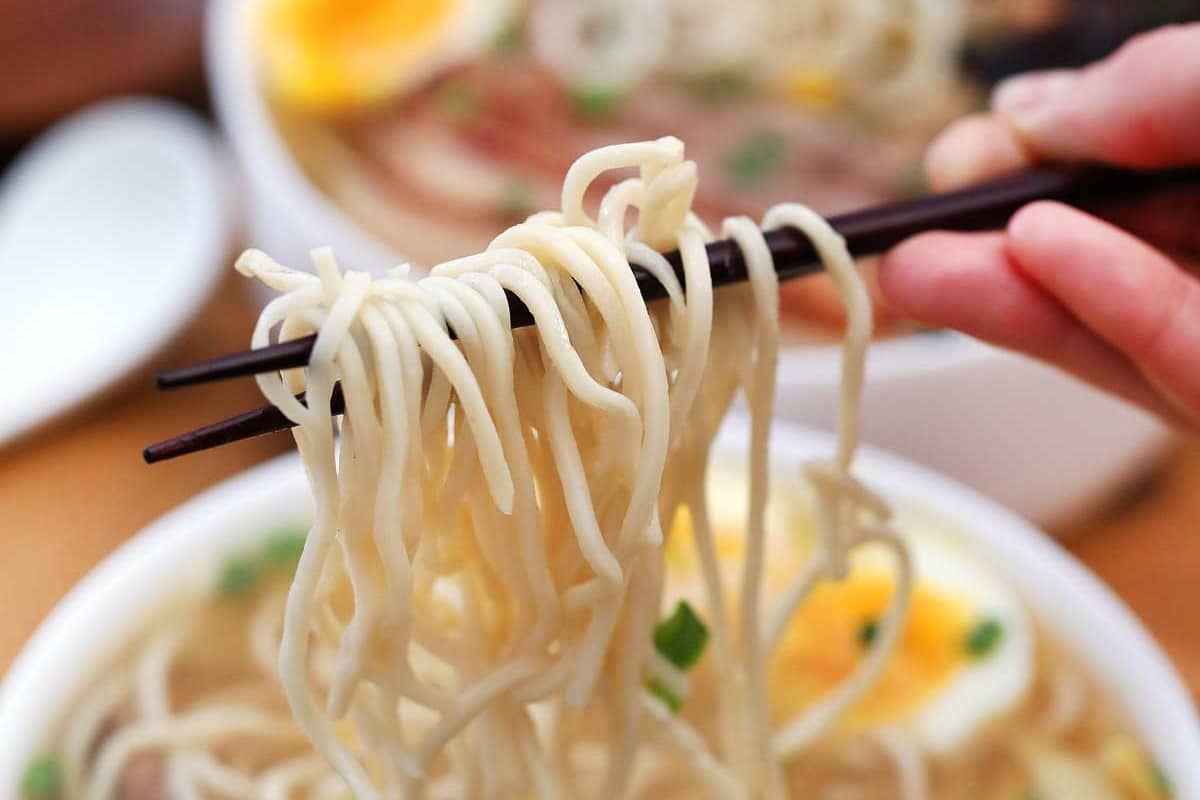




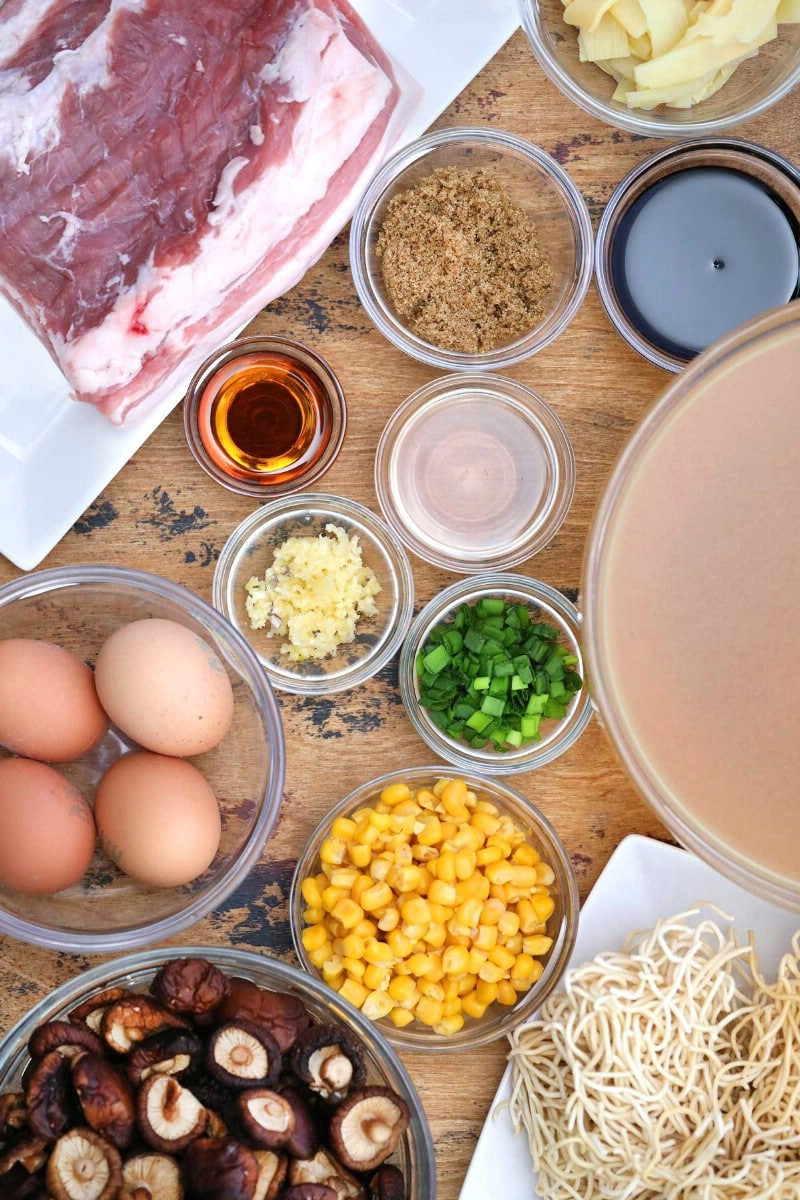


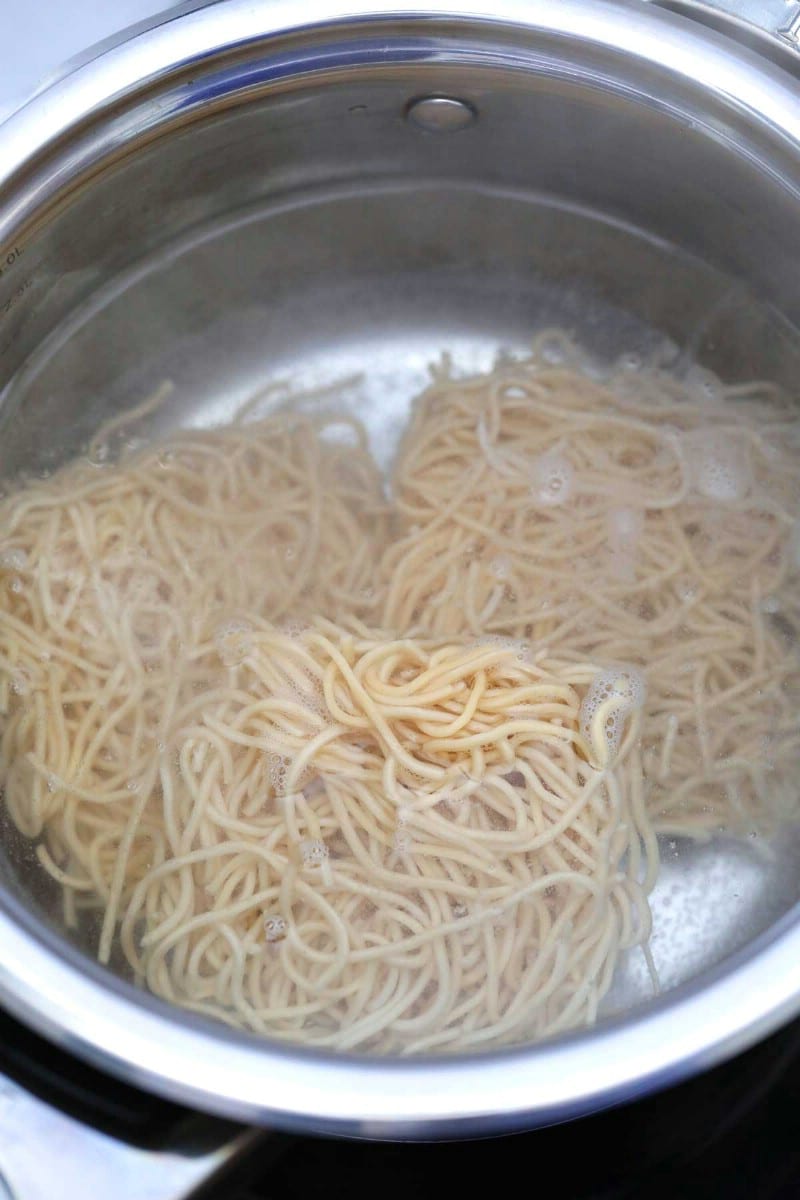
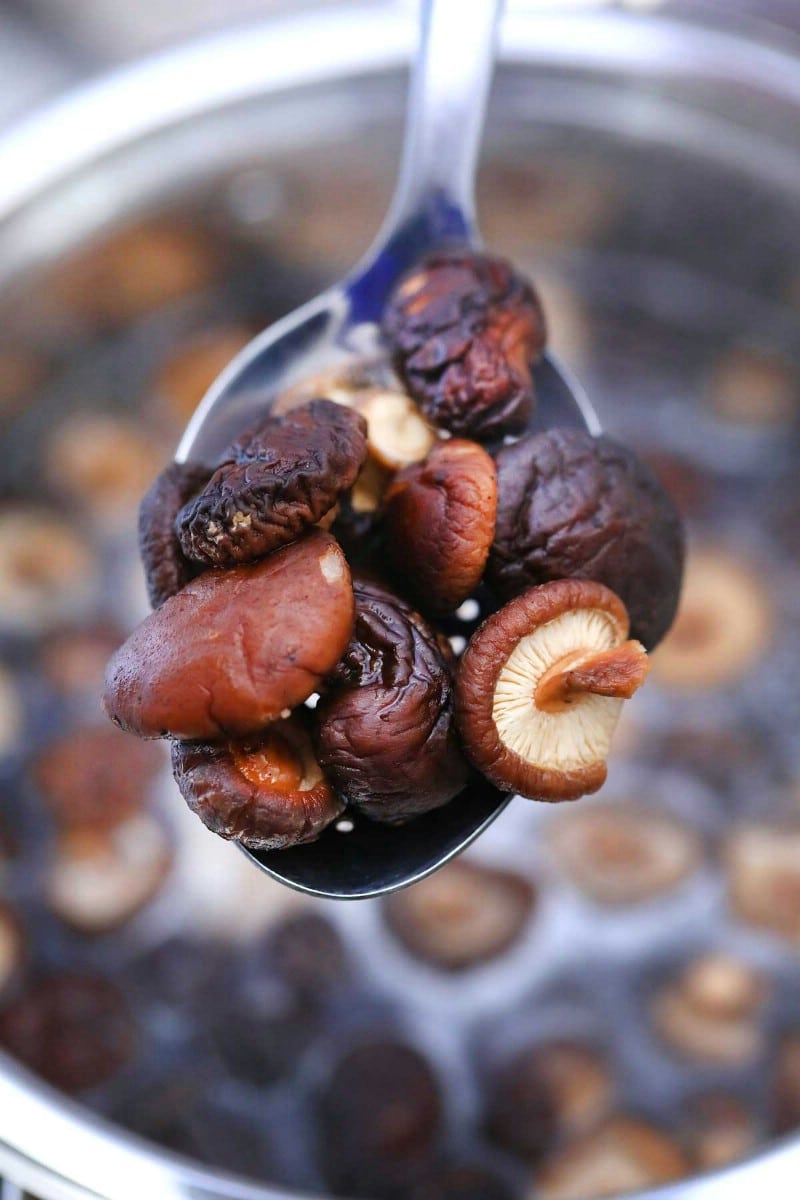
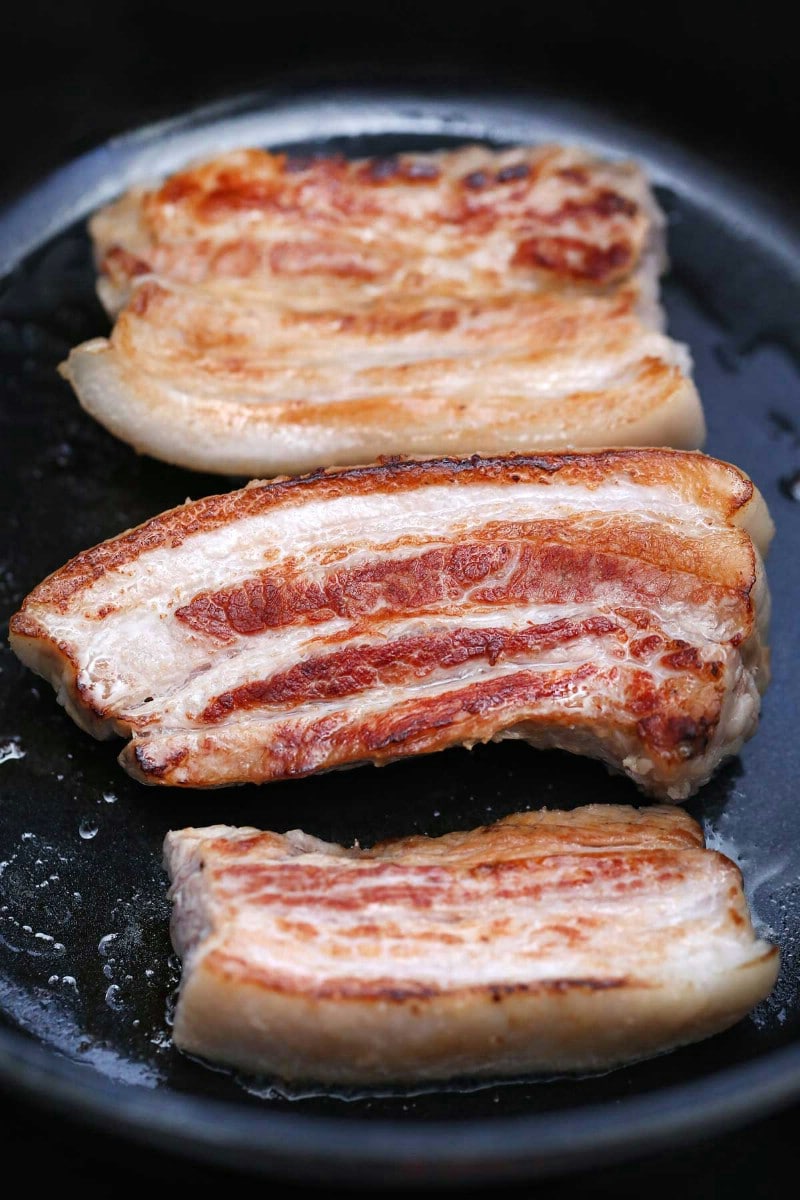
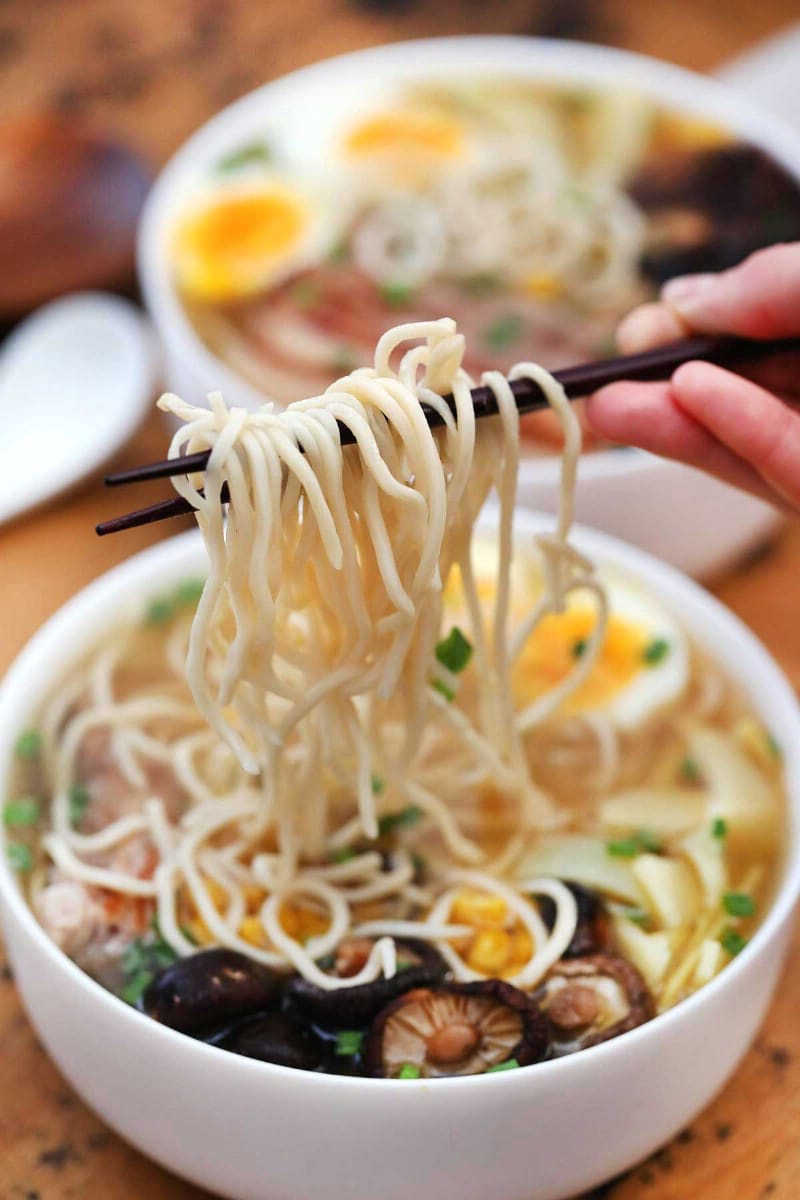




Jennifer
Wonderful Tonkotsu! I aways follow the recipe as written, the first time through. I was nervous that there was so little seasoning. The broth on its own is good, then you add the miso tare. OHHH MMYYY!. I didn't have any pork belly, maybe next time. But, I did pull all the meat off the pork bones, marinated some in soy and mirin then crisped up in the frying pan. Super yum. I'll make no other changes to this recipe, It is lovely! Thank you